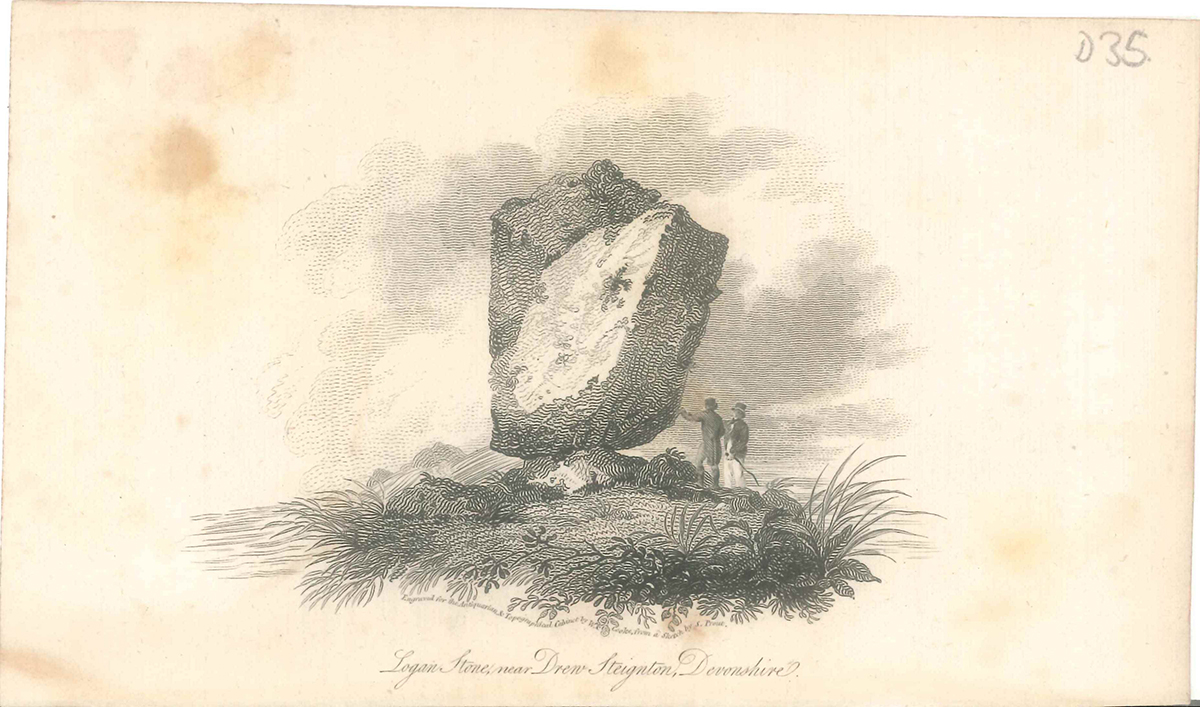 By Ellie Jones, Cathedral Archivist
By Ellie Jones, Cathedral Archivist
This engraving was published in the Antiquarian and Topographical Cabinet, containing a series of elegant Views of the Most Interesting Objects of Curiosity in Great Britain, in 1817. It shows two nattily dressed gentlemen standing next to the “Logan Stone” on the banks of the River Teign, under Hunter’s Tor, near Drewsteignton in Devon. The word “logan” comes from the English dialect term “log”, meaning “to rock”.
The accompanying text quotes heavily from Richard Polwhele’s Histories of Devon, published a few years earlier. The unequally sized rock is described as being between six and eight feet tall and up to 18 feet wide, and Polwhele “easily rocked it with one hand; but its quantity of motion did not exceed one inch, if so much. The equipoise, however, was more perceptible a few years since… It seems to have been the work of nature.”
Logan stones frequently have ritual, magical and superstitious associations, but they are large, naturally-occurring rock formations so finely balanced that they will move slightly on their base with just a nudge. They are found all over the world, but Dartmoor is especially favourable for their formation. Here and there, the same chemical and mechanical weathering processes which have eroded the granite landscape of Dartmoor to produce its distinctive tors will act on joints in particular rocks in such a way as to leave behind these special moving rocks.